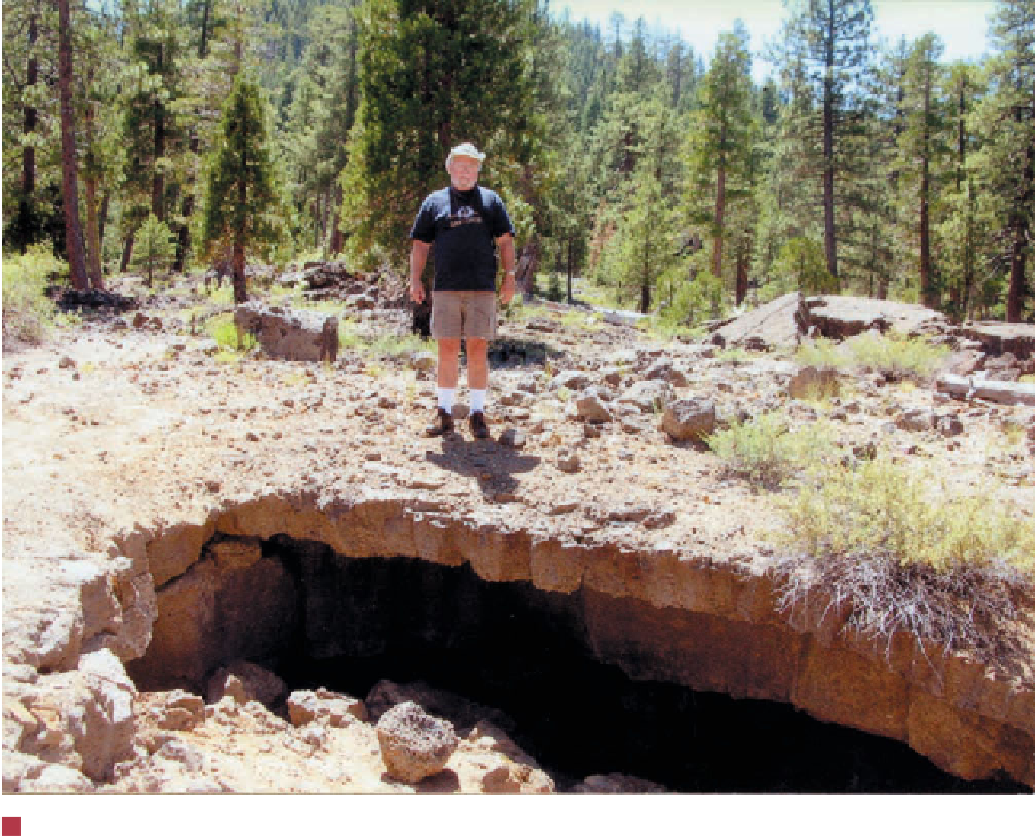Geology Reference
In-Depth Information
Even low-viscosity lava fl ows generally do not move very
rapidly. Flows can move much faster, though, when their mar-
gins cool to form a channel, and especially when insulated on
all sides as in a
lava tube
, where a speed of more than 50 km/hr
has been recorded. A conduit known as a lava tube within a
lava flow forms when the margins and upper surface of the
fl ow solidify. Thus confi ned and insulated, the fl ow moves rap-
idly and over great distances. As an eruption ceases, the tube
drains, leaving an empty tunnel-like structure (
Figure 5.3a).
Part of the roof of a lava tube may collapse to form a
skylight
◗
a
Entrance to a lava tube on Medicine Lake Volcano, a huge shield volcano in northern California.
It has a circumference of 240 km and it last erupted about 1000 years ago.
◗
Figure 5.3
Lava Tubes Lava tubes consisting of hollow
spaces beneath the surfaces of lava fl ows are common in
many areas.
b
An active lava tube in Hawaii. Part of the tube's roof has
collapsed, forming a skylight.



Search WWH ::

Custom Search